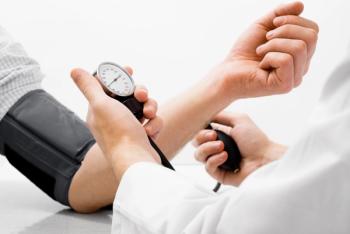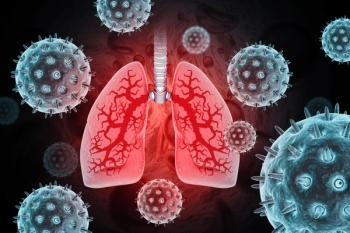
CDC Confirms Additional Coronavirus Cases, Says Threat to US is Low
The virus, first seen in Wuhan, China, is characterized by mild to severe respiratory illness, including fever, cough, and shortness of breath.
This article was updated on January 28th at 1:15pm.
There are now 5 confirmed cases of coronavirus in the United States, according to the CDC, but the agency said the threat to the general public is still low. California has 2 confirmed cases of the virus, while Arizona, Illinois, and Washington State each have a single case.1
The virus, first seen in Wuhan, China, is characterized by mild to severe respiratory illness, including fever, cough, and shortness of breath. Other symptoms may include fever, myalgia, fatigue, sputum production, headache, haemoptysis, and diarrhea.
The Wuhan region is experiencing an outbreak of the new coronavirus, and cases of the virus have been confirmed in more than 15 countries, including the US and Canada.2 About 25% of reported cases have been classified as severe, according to Elsevier’s coronavirus information center. The mortality rate is approximately 3%, with 41 deaths in the first 1287 reported cases. So far, mortality has been associated with advanced age or comorbidities.3
This human-to-human coronavirus is being spread by travelers to the Wuhan region, according to the CDC, and the agency is recommending that people avoid nonessential travel to China.4 The CDC is continuing to monitor the situation and make aggressive strides toward better understanding the disease and establishing effective treatments.1
“At this point, even in the CDC, there are still a lot of questions to be answered,” said Ken Thai, PharmD, president of the California Pharmacists Association (CPhA).
Identifying the Virus
The simultaneous occurrence with flu season and similar symptoms have made identification difficult. In patients with respiratory symptoms, clinicians should inquire about recent travel history or close contact with someone who has recently traveled to China.3
Symptoms may be slightly more severe than typical flu or pneumonia-like symptoms, including a higher fever, shortness of breath, or chest tightness. Pneumonia-like symptoms can be very general, Thai said, so clinicians should pay close attention to the demographics of the patient—elderly patients or those who are immunocompromised are at the most risk.
Another key aspect of the virus is its human-to-human spread, Thai said.
“Coronaviruses are typically spread from animals to humans, so the fact that there’s human-to-human contraction is pretty rare,” Thai said.
In the US, suspected cases should be reported to local or state health departments, which will coordinate diagnostic testing through the CDC if the patient meets clinical and epidemiologic criteria. Collection of specimens from the upper respiratory tract, lower respiratory tract, and serum is a priority, according to the CDC. The agency also advised that testing for other respiratory pathogens by the provider should not be delayed by specimen shipping to the CDC.
"We echo the prevention tips and travel-related precautions issued by CDC, and strongly urge patients and pharmacists to protect themselves against infection by acting to prevent the spread of germs. As with each cold and flu season, regularly and thoroughly wash your hands, cover your mouth when coughing or sneezing, and disinfect the things you touch," said Lisa Schwartz, PharmD, senior director of Professional Affairs at the National Community Pharmacists Assocation.
Treatments
There is currently no antiviral agent available for treatment of the infection, and there is no vaccine. Current recommended treatments are supportive, and include supplemental oxygen, and conservative fluid management.3
Infection control measures should be implemented immediately once an infection is suspected.
Current recommendations from the World Health Organization include:5
- The patient should be provided with a face mask and placed in a closed room, preferably with structural safeguards against airborne transmission.
- Anyone entering the room should follow standard, contact, and airborne precautions.
- Patients managed at home should self-isolate in a single area, preferable with a separate bathroom, and should continue to wear a face mask during any contact with others.
- The patient and anyone in contact with them should follow strict hygiene, including diligent hand washing and cough hygiene.
There have been many inquiries about purchasing face masks in community pharmacies, especially from people in Asian communities where there may be more travelers from Wuhan City and the surrounding region, according to Thai. Still, he continued, the virus is not a reason to panic.
“I am not going to say you should not be concerned,” Thai said. “I think that’s how global pandemics occur, when people are maybe not keeping up with the facts and the data. But there have been honestly very low numbers of [coronavirus] incidents thus far.”
REFERENCES
- CDC confirms additional cases of 2019 Novel Coronavirus in United States [news release]. Centers for Disease Control and Prevention; January 26, 2020. https://www.cdc.gov/media/releases/2020/s0126-coronavirus-new-cases.html. Accessed January 27, 2020.
- CDC. Confirmed 2019-nCoV Cases Globally Global Map. CDC website. https://www.cdc.gov/coronavirus/2019-ncov/locations-confirmed-cases.html. Reviewed January 28, 2020. Accessed January 28, 2020.
- Novel Coronavirus Information Center, Elsevier. Elsevier.com/connect/coronavirus-information-center. Accessed January 27, 2020.
- CDC. Novel Coronavirus in China. CDC website. https://wwwnc.cdc.gov/travel/notices/warning/novel-coronavirus-china. Reviewed January 27, 2020. Accessed January 28, 2020.
- Infection prevention and control during health care when novel coronavirus (nCoV) infection is suspected. World Health Organization, January 25, 2020. https://www.who.int/publications-detail/infection-prevention-and-control-during-health-care-when-novel-coronavirus-(ncov)-infection-is-suspected-20200125. Accessed January 27, 2020.
Newsletter
Stay informed on drug updates, treatment guidelines, and pharmacy practice trends—subscribe to Pharmacy Times for weekly clinical insights.





















































































































































































































